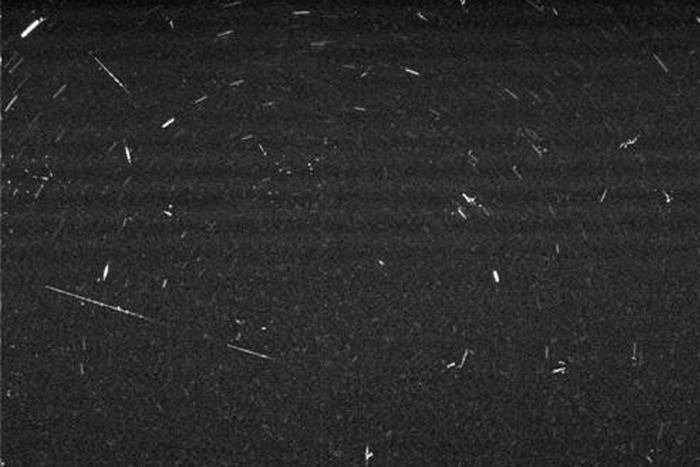Did Mars' Methane Come from Comets?

One of the most provocative questions about Mars today is what is causing periodic spikes in the amount of methane in the planet's atmosphere.
On Earth, methane is strongly tied to biological activities, raising the prospect that colonies of methane-emitting microbes might be living on Mars. Another option is that the gas stems from geological activities, though so far attempts to match the methane spikes with the seasons have not panned out.
NASA scientist Marc Fries and colleagues have another idea – meteor showers.
Curiosity Detects Mysterious Methane Spikes on Mars
Fries, who studies meteorites, comet samples other extraterrestrial materials, says there is a correlation between when the methane plumes appear and Mars’ transit through a region of space littered by remnants of a comet, the source material for meteor showers.
"Carbonaceous solids such as those of cometary origin can generate a significant volume of methane … under UV (ultraviolet) radiation," Fries and colleagues wrote in a paper presented Monday at the Lunar and Planetary Science Conference in The Woodlands, Texas.
The scientists found that all known methane detections occurred within 16 days of Mars' orbit encountering the orbit of a comet capable of producing a meteor shower.
Get the Space.com Newsletter
Breaking space news, the latest updates on rocket launches, skywatching events and more!
Photos: 10 Years On Mars: Opportunity's First Sols
"You have a mechanism that produces methane and a time correlation between the occurrence of meteor showers and the appearance of methane," Fries told Discovery News.
Not everyone is convinced. NASA planetary scientist Michael Mumma, who led a team that made the initial findings of methane spikes on Mars, said there have been many more times when Mars approached known meteor streams and methane was not detected.
"Our team searched (for methane) on more than 30 multi-day campaigns since 2002, and detected methane on only three (Jan 2003, March 2003 and May 2005)," Mumma wrote in an email to Discovery News.
Leak in Curiosity's Wet Chemistry Test Finds Organics
"Other teams report similar rare detections. In short, no systematic correlation with meteor streams," he said.
Fries points out ground-based telescopes have to account for methane in Earth's atmosphere, and that NASA's Mars rover Curiosity, which has chemical sniffers to hunt for the gas, has a very local sampling field. Also, not all comet streams end up triggering meteor showers.
The final word may come from Europe's Trace Gas Orbiter, which was launched last week for a seven-month journey to Mars. Once it puts itself into orbit, the spacecraft will need about another year to properly position itself for observations.
Mars Microbe Traces Spotted by Rover? Probably Not
"We can basically test this hypothesis of whether or not the methane plumes are coming from meteor showers," Fries said.
"We know when the meteor showers are supposed to happen … and we can measure and see if there's a significant amount of material dropped onto Mars. Then we can turn around and watch for methane."
Originally published on Discovery News.
Join our Space Forums to keep talking space on the latest missions, night sky and more! And if you have a news tip, correction or comment, let us know at: community@space.com.

Irene Klotz is a founding member and long-time contributor to Space.com. She concurrently spent 25 years as a wire service reporter and freelance writer, specializing in space exploration, planetary science, astronomy and the search for life beyond Earth. A graduate of Northwestern University, Irene currently serves as Space Editor for Aviation Week & Space Technology.









